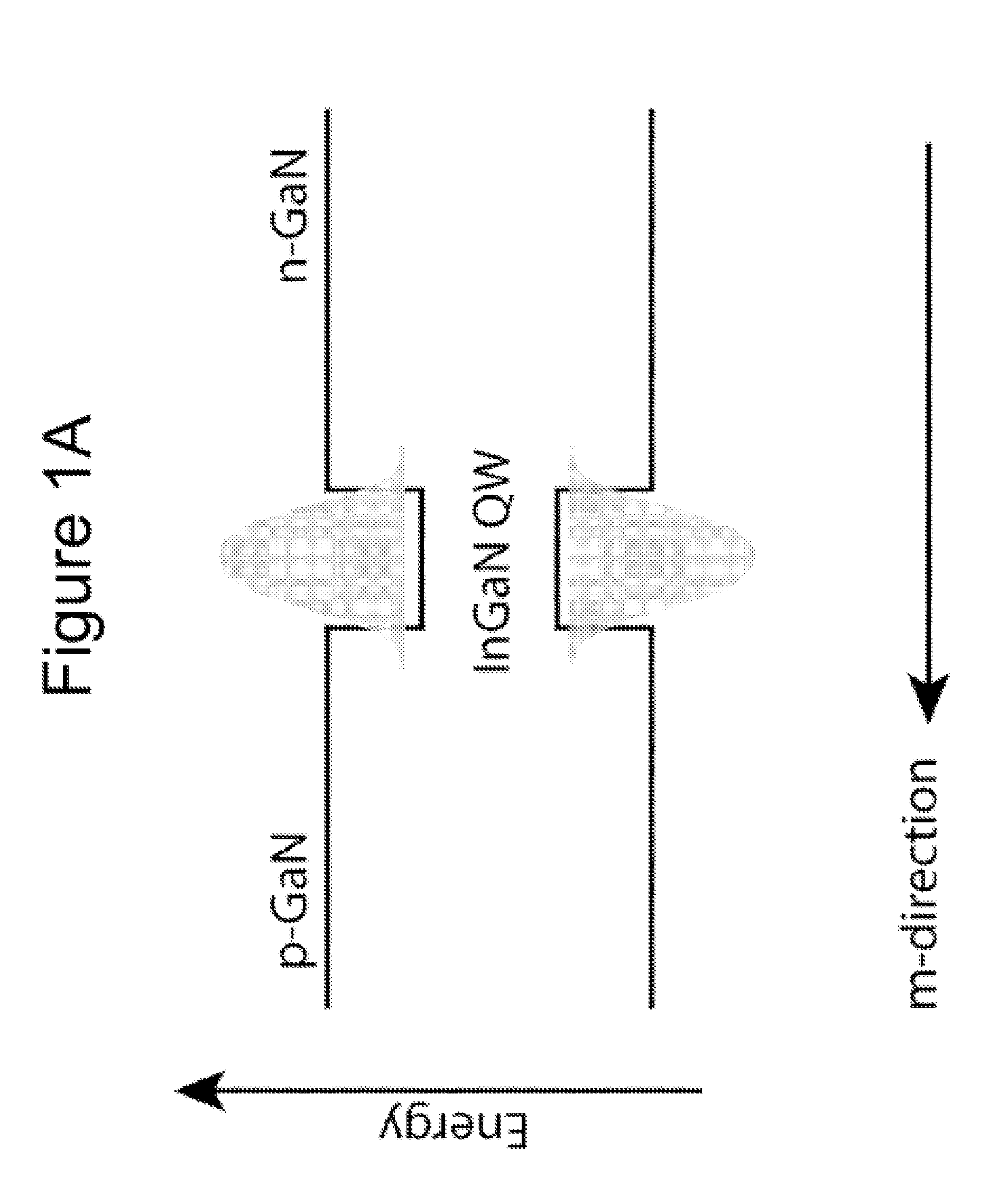Quantum Dot Wavelength Conversion for Optical Devices Using Nonpolar or Semipolar Gallium Containing Materials
a technology of nonpolar or semipolar gallium containing materials and quantum dots, which is applied in the field of lighting techniques, can solve the problems of low efficiency, low efficiency, and low efficiency of conventional edison light bulbs, and achieve the effect of improving efficiency and being easy to implemen
- Summary
- Abstract
- Description
- Claims
- Application Information
AI Technical Summary
Benefits of technology
Problems solved by technology
Method used
Image
Examples
Embodiment Construction
[0019]We have discovered that recent breakthroughs in the field of GaN-based optoelectronics have demonstrated the potential of devices fabricated on bulk nonpolar and semipolar GaN substrates. The lack of strong polarization induced electric fields that plague conventional devices on c-plane GaN leads to a greatly enhanced radiative recombination efficiency in the light emitting InGaN layers. Furthermore, the nature of the electronic band structure and the anisotropic in-plane strain leads to highly polarized light emission, which will offer several advantages in applications such as display backlighting.
[0020]Of particular importance to the field of lighting is the progress of light emitting diodes (LED) fabricated on nonpolar and semipolar GaN substrates. Such devices making use of InGaN light emitting layers have exhibited record output powers at extended operation wavelengths into the violet region (390-430 nm), the blue region (430-490 nm), the green region (490-560 nm), and t...
PUM
 Login to View More
Login to View More Abstract
Description
Claims
Application Information
 Login to View More
Login to View More - R&D
- Intellectual Property
- Life Sciences
- Materials
- Tech Scout
- Unparalleled Data Quality
- Higher Quality Content
- 60% Fewer Hallucinations
Browse by: Latest US Patents, China's latest patents, Technical Efficacy Thesaurus, Application Domain, Technology Topic, Popular Technical Reports.
© 2025 PatSnap. All rights reserved.Legal|Privacy policy|Modern Slavery Act Transparency Statement|Sitemap|About US| Contact US: help@patsnap.com



